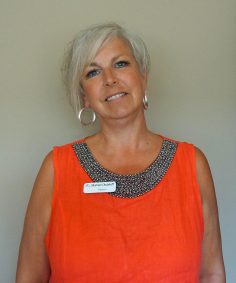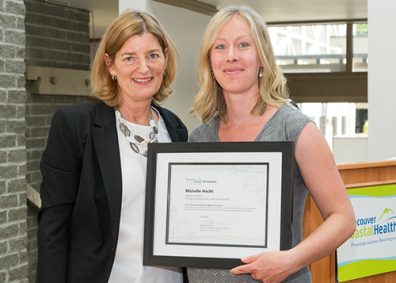System-wide teamwork netting impressive results for patient access and flow at LGH
A story about patient access and flow may not be as sexy or exciting to read about as a swanky new OR or a fancy new high-tech diagnostic tool. But it’s just as important.
Streamlined patient access and flow means a patient is getting the right care in the right place – every day – and physicians and staff are working together to ensure this happens. At Lions Gate Hospital, the process is now streamlined so efficiently that a back-up of patients across the hospital is far less common.
In fact, the status of patients to beds – the Over Capacity Protocol (OCP) – is now consistently green on our scorecard. A year ago, our OCP would show up as amber or red.
LGH has improved in other areas as well, including “time to admit from ED,” long length of stay (LLOS), and inpatient days. This improvement is a direct result of teamwork and a systematic approach.
How has this happened?
“There has been a significant culture change at LGH that started about a year ago and really kicked into gear in early spring,” says Shannon Chutskoff, Director Acute Services.

Shannon Chutskoff, Director, Acute Services LGH + STS.
“We are seeing stellar results across the board. Everybody in the system – from physicians, PCCs and DCCs to managers and directors – has had to take personal accountability for patients and how we can better care for them in the right place, whether it’s back at home, in long-term care or here at the hospital if necessary, especially for our older patients. We have moved from a silo approach to where we are all regularly communicating and taking a collective responsibility to work together. When the results start to look bad, we all jump on it to see how we can improve the situation.”
Ingredients for success
LGH’s success is the result of not one but many worlds coming together – from the concerted efforts of acute, residential and home/community staff to the launch of new initiatives, the streamlining of processes, such as paper work for long-term care patients, and a redesigned flow in the Emergency Department. The latter has had the added bonus of also boosting ED staff morale.
Some of the initiatives and strategies in place to mitigate demand for acute beds include:
- Cap Plan – A software tool purpose built for hospitals, Capacity Planning provides leadership and staff with vital information required to deliver patient needs within capacity. Cap Plan meetings are an integral component to LGH’s patient flow successes because it forecasts patient flow demands and ensures appropriate staffing levels to meet that demand. It also assists with planning effective upstream and downstream strategies to address surge times.
- ED iCare/QRT –The ED iCare Team includes a Quick Response Team (OT and Home Care Nurse), a Geriatric Triage Nurse and DCC who work closely with the ED physician to prevent unnecessary admissions by having urgent wrap-around community service to support the patient’s transition to the community.
- Palliative Care and Quick Response Nurse Practitioners – They work closely with the ED iCare team for care planning and smooth transition for patients across the continuum of care.
- Home is Best Philosophy – Includes Home First Case Conferences to ensure all options are explored for returning patient to the most appropriate setting; Ideal Transition Home and iCare, both of which support early discharge planning and integrated case conferences to explore supports and resources for discharge planning early on.
- The new PATH (Patient Assessment and Transition Home) and SSLTC (Short Stay Long Term Care) units: By utilizing PATH, SSLTC and residential care beds, we are pulling patients in a timely fashion in order to provide the right service for the patient, which in return keeps acute bed space available.
A transformed Emergency Department
While most of the strategies focus on staff collaboration and communication, a physical change in the Emergency Department layout has also played a key role in the patient flow success.
In early March, the First Aid and Intake/Rapid Assessment Zone (RAZ) areas swapped physical locations to better streamline patient access, enhance patient care and privacy, and improve the work flow and communication for staff and physicians.
The move was spearheaded by RN Michelle Hecht who was part of a similar and successful change at a Calgary-area hospital. Her work and determination on the project earned her an Award of Merit (Innovation) in the 2017 People First Awards as well as growing interest from other hospitals that want to mimic LGH’s successes in the ED.

Michelle Hecht receives her Award of Merit, Innovation, from Mary Ackenhusen , VCH’s CEO and President.
It also got a huge thumbs up from staff.
“You have helped make the ED the most enjoyable to work in since I started 15 years ago,” said Dr. Anne Watt soon after the switch.
The ED is still seeing the same volume of patients but they are being seen and assessed more quickly, which is reducing the time they sit in the waiting room.
“The tremendous team work that has gone on over the last few months in acute, community and residential is remarkable and it’s having a direct and positive impact on our patients,” says Shannon. “Inpatient cases are down, ED admits are down and we’re tracking above 80% of patients getting a bed in under 10 hours. I’d like to applaud everyone for their good work. Let’s keep it up.”

